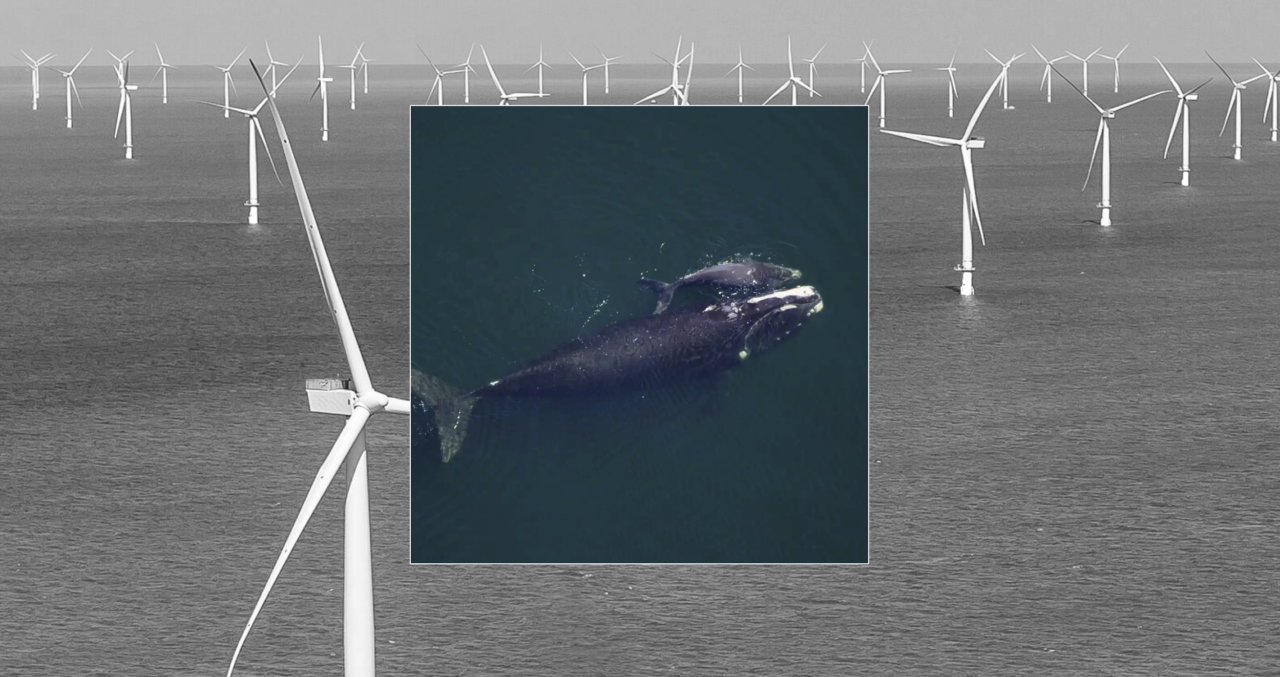Offshore Wind Development Impact
Addressing data gaps and mitigating risks along baleen whale migration routes

With the growth of offshore wind farms along the U.S. Atlantic coast, our primary concern is the potential impact on North Atlantic right whales, although all other whale species are also protected under the same laws. The challenge lies in understanding potential space-use conflicts since many wind farms are planned along migration routes of these whales.
There has been limited data collection so far, and only a few test installations of 5-7 wind turbines each off the Atlantic that haven’t been sufficiently monitored before larger-scale farms are built. Because of this, it’s difficult to predict the effects of larger wind farms (70 to 150 turbines).
Some groups claim wind farms will have severe impacts on whales, and others believe the effects will be minimal, but the reality is likely somewhere in between. It’s important to gather baseline data before major developments like wind farms (or catastrophes like the Deepwater Horizon oil spill) to assess any potential impacts accurately. A project funded by the National Offshore Wind R&D Consortium is exploring how species occurrence data (from visual or acoustic surveys) can be integrated into risk models for wind farm developers, with a focus on temporal and spatial distribution patterns of baleen whales and bottlenose dolphins. The goal is to provide data that helps developers avoid costly delays during construction by recommending optimal construction times where there’s a lower risk of whale encounters.
Real-time monitoring
Real-time systems typically involve deploying acoustic monitoring devices—hydrophones—that listen continuously for whale vocalizations. Automated detection algorithms analyze these sounds in near real-time to identify when and where whales are present.
When whale sounds are detected, the system can alert nearby vessel operators, construction sites, or monitoring stations. This allows human activities to adjust accordingly, such as slowing down vessels or temporarily halting construction to minimize disturbances and reduce the risk of collisions.
Real-time monitoring provides several advantages over traditional methods that rely on visual sightings or fixed seasonal activity predictions. Since whale movements can vary significantly with changing conditions, a constant, real-time approach can help ensure that protections align with actual whale presence. These systems are especially valuable for species like the North Atlantic right whale, where unpredictable migration patterns make it challenging to predict their locations accurately year to year.
In the Maryland offshore wind project, one partner has a mooring with a near real-time monitoring system running automated detection algorithms. Though not yet used to actively manage construction activity, this system enables the team to compare detection results with data from other devices, refining detection accuracy and laying the groundwork for more responsive conservation measures in future developments.